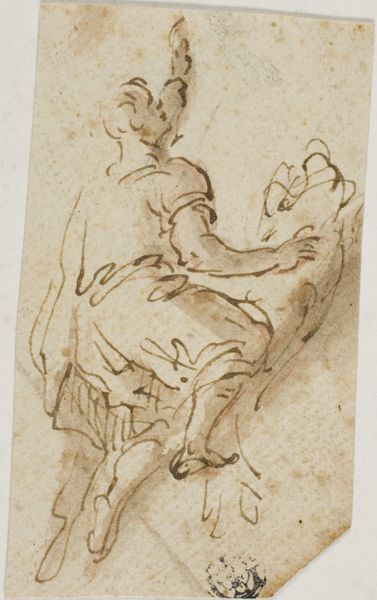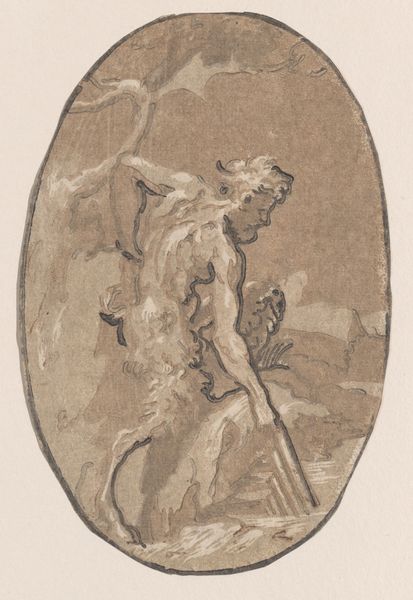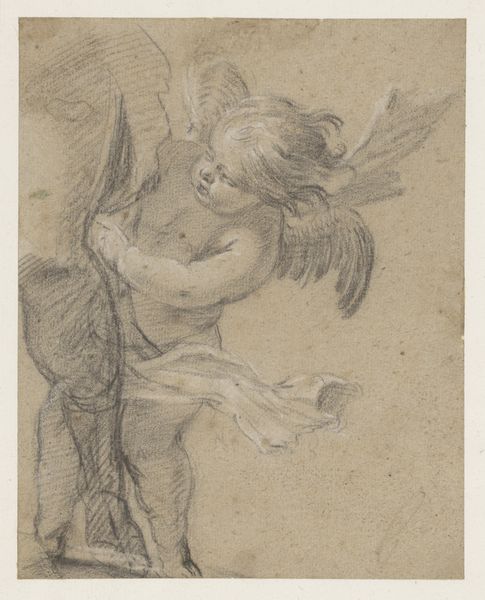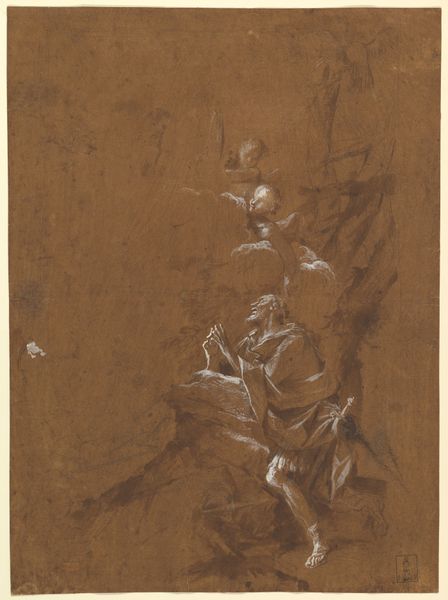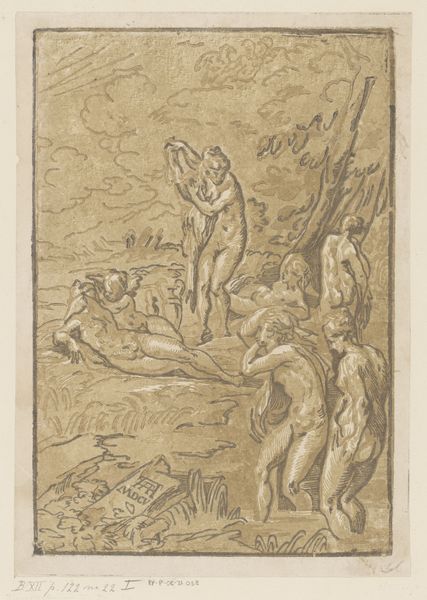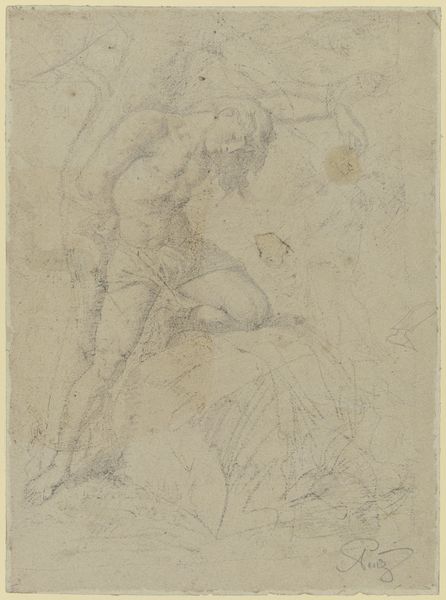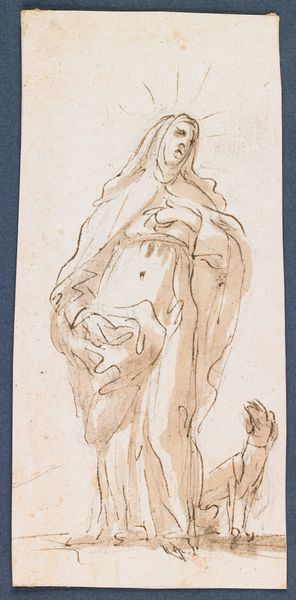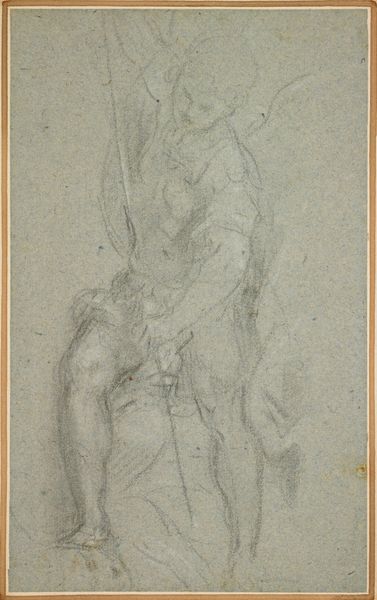
drawing, paper, ink
#
drawing
#
pencil sketch
#
landscape
#
figuration
#
paper
#
11_renaissance
#
ink
#
ink drawing experimentation
#
sketchbook drawing
#
italian-renaissance
Dimensions: height 203 mm, width 134 mm
Copyright: Rijks Museum: Open Domain
Ugo da Carpi created this chiaroscuro woodcut, "Marsyas die Minerva's panfluit vindt," sometime between 1480 and 1532. Da Carpi was an early innovator of the chiaroscuro woodcut, a technique that used multiple blocks to create tonal gradations and three-dimensional effects. This print depicts a scene from Greek mythology. Minerva, the Roman goddess of wisdom and strategic warfare, invented the flute. However, she quickly discarded it because playing it distorted her face. Here, we see the satyr Marsyas discovering the discarded flute. Renaissance art often used classical subjects to explore contemporary ideas about beauty, skill, and knowledge. Minerva, a powerful female deity, rejects an instrument that mars her beauty, while Marsyas, a figure often associated with wildness and disorder, embraces it. Through the story of Minerva and Marsyas, da Carpi invites viewers to contemplate the complex relationship between art, beauty, and the social order.
Comments
No comments
Be the first to comment and join the conversation on the ultimate creative platform.

